Discovering Seville: Exploring this vibrant and colorful city.
When you visit Spain at Seville, you’ll soak in culture, history and a gorgeous city all at once. It seems like every street you walk down in the old center of Seville brings you immediately to a part of Spain that oozes Andalucía and historic Islamic character called Mudejar (Spanish rule with Islamic design and influence), only few places in Spain can live up to in this area of Southern Spain. A walk through many of the old neighborhoods of the historic center overwhelms the first time visitor with so much luxurious detail, vivid colors and intense graphic designs.
In order that you do not get overloaded and burnt out with the multitude of architectural wonders and ornate design, I am showing you the smaller details that draws so much awe and inspiration to the overall magnificence and design of this Unesco World Heritage site.
Weather and best time to visit Seville
Seville, Spain, is a beautiful city with a Mediterranean climate, characterized by hot, dry summers and mild, wet winters. The best time to visit Seville depends on your preferences for weather and the type of activities you want to enjoy. Here’s a breakdown of the weather and the best times to visit:
Spring (March to May):
Spring is one of the best times to visit Seville. The weather is pleasantly warm, and the city’s gardens and parks come to life with colorful blossoms.
Average temperatures range from 15°C (59°F) in March to 26°C (79°F) in May.
This season is ideal for exploring Seville’s historic sites, enjoying outdoor cafes, and attending festivals like Semana Santa (Holy Week) and the April Fair.
Summer (June to August):
Summers in Seville can be scorching hot, with temperatures often exceeding 35°C (95°F) or more.
If you can tolerate the heat, you’ll find many cultural events and festivals taking place during this time, such as the Seville Fair (Feria de Abril) in April and various music and dance festivals.
Be prepared for high temperatures and the need to stay hydrated and cool.
Autumn (September to November):
Autumn is another excellent time to visit Seville, as the weather starts to cool down, and the city is less crowded than in the summer.
Average temperatures range from 26°C (79°F) in September to 17°C (63°F) in November.
Enjoy pleasant weather for sightseeing, outdoor dining, and exploring Seville’s neighborhoods.
Winter (December to February):
Winters in Seville are mild compared to many other European cities, but it can still be quite chilly and rainy, especially in January.
Average temperatures range from 15°C (59°F) in December to 13°C (55°F) in January.
This is a good time for budget travelers as accommodation prices are lower, and you can experience a more local, authentic side of Seville.
In summary, the best time to visit Seville is during the spring (March to May) and autumn (September to November) when the weather is pleasant, and you can enjoy outdoor activities without the extreme heat of summer. However, if you don’t mind the heat and want to experience the city’s vibrant festivals, summer can also be a great time to visit. Just be prepared for high temperatures and plan accordingly.
Top places to visit around Seville, Spain
Seville, Spain, is a city rich in history and culture, offering a wide range of attractions to explore. Here are some of the top attractions to visit in and around Seville:
Alcázar of Seville (Real Alcázar de Sevilla):
This stunning royal palace is a UNESCO World Heritage Site, known for its intricate Mudejar, Gothic, Renaissance, and Baroque architecture. Don’t miss the beautifully landscaped gardens.
Seville Cathedral (Catedral de Sevilla):
The Seville Cathedral is the largest Gothic cathedral in the world and is also a UNESCO World Heritage Site. Climb the Giralda Tower for panoramic views of the city.
Giralda Tower (La Giralda):
Originally a minaret, the Giralda Tower is now the cathedral’s bell tower. It offers a unique and relatively easy ascent with ramps instead of stairs.
Plaza de España:
This magnificent semicircular plaza is a prime example of regionalist architecture and features a series of bridges over a canal, representing different provinces of Spain. It’s a beautiful spot for a stroll.
Barrio Santa Cruz:
The historic Jewish quarter of Seville is a maze of narrow streets, charming squares, and picturesque whitewashed buildings. It’s a delightful area to wander and discover hidden gems.
Metropol Parasol (Las Setas):
This modern architectural wonder is a wooden structure resembling giant mushrooms. You can take an elevator to the top for panoramic views and explore the market below.
Triana District:
Located across the Guadalquivir River from the city center, Triana is known for its vibrant flamenco culture, ceramics, and traditional taverns. It’s a great place to experience local life.
Flamenco Shows:
Seville is considered the heart of flamenco, and there are numerous venues where you can enjoy authentic flamenco performances. The Flamenco Museum is also worth a visit.
Archaeological Ensemble of Italica:
Located just outside Seville, Italica is an ancient Roman city with well-preserved ruins, including an amphitheater. It’s a fascinating glimpse into the city’s Roman history.
Maria Luisa Park (Parque de María Luisa):
This expansive park, adjacent to Plaza de España, offers lush greenery, ponds, and pleasant walking paths. It’s an ideal place for a leisurely stroll or a picnic.
Hospital de los Venerables:
This 17th-century baroque building is now an art center and features a beautiful courtyard. It hosts exhibitions and cultural events.
Casa de Pilatos:
This aristocratic mansion combines Mudejar, Gothic, Renaissance, and Baroque styles and is known for its beautiful architecture and gardens.
These are just a few of the many attractions to explore in Seville and its surroundings. Whether you’re interested in history, architecture, culture, or simply soaking in the vibrant atmosphere of the city, Seville has something to offer every traveler.
Here are some of the stunning details of Seville to savor:
Arched breezeways invite you to linger and explore
Ornate fountains soothe the eye and refreshes
Ceramic details impresses with intricate design and patterns
Islamic Influence exudes exotic flare
Horse drawn carriages always charm us
Beautiful ironwork exudes Spanish bravado
Check out these other places to visit around Seville, Spain
Stunning gardens always invite us in sit and enjoy the views
It seems like every attraction and historic site one visits in Seville is so filled with amazing art and craftsmanship in the monuments and landmarks. It is an endless array of beautiful architecture, gardens, palaces, cathedrals and enormous plazas for everyone to stroll through. Seville is grand and magnificent, just how one would dream of an Andalucian experience in Southern Spain.
Hope you enjoyed your visit to Discovering Seville, Spain for Travel Photo Mondays, please visit the rest of the bloggers below to see more stunning places around the world this Monday.

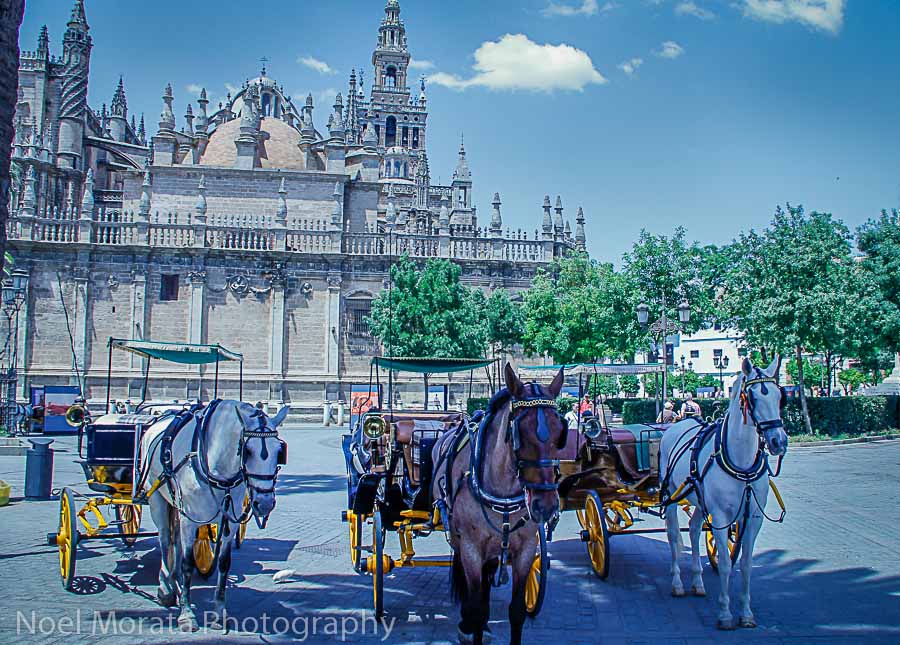
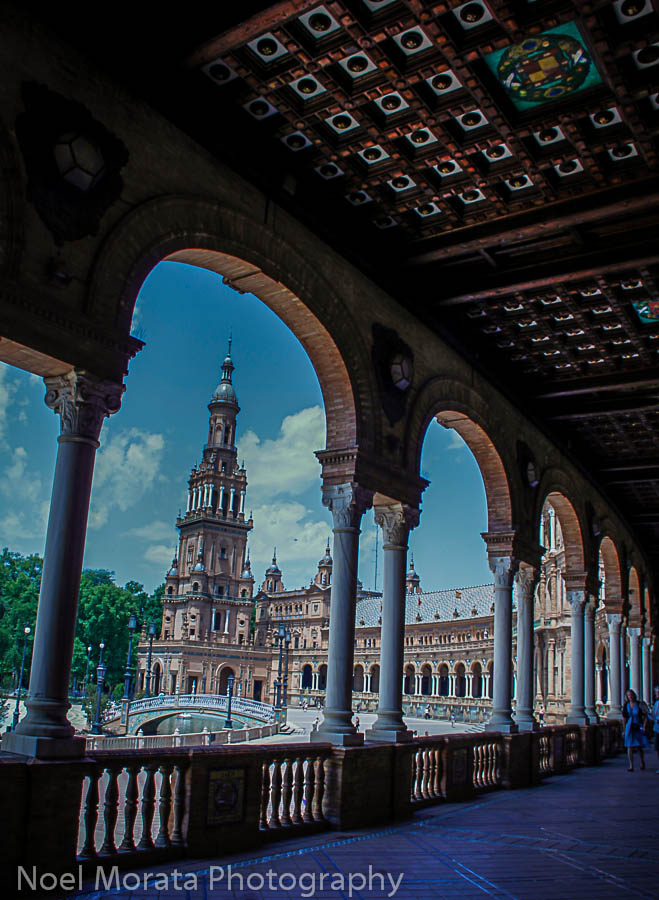
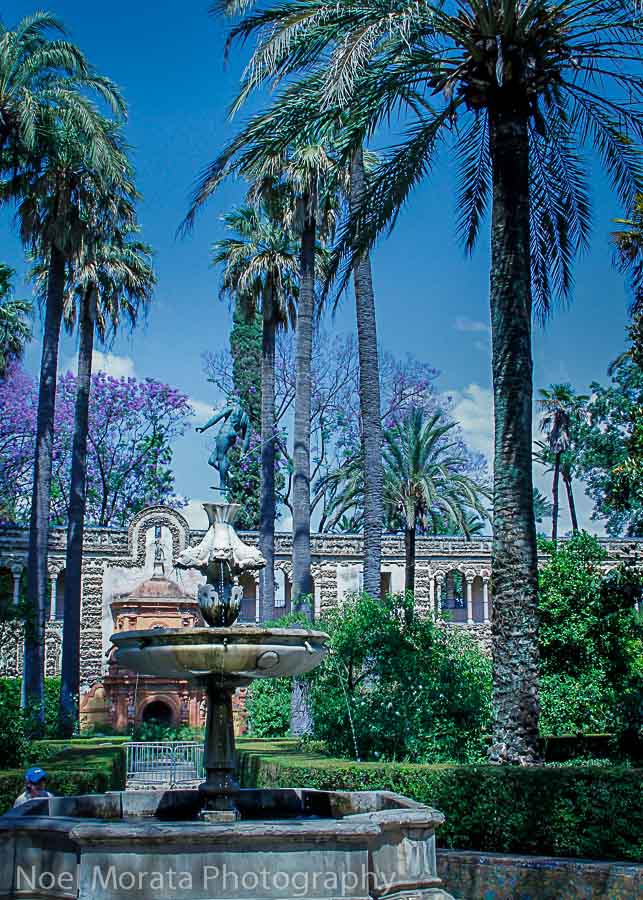
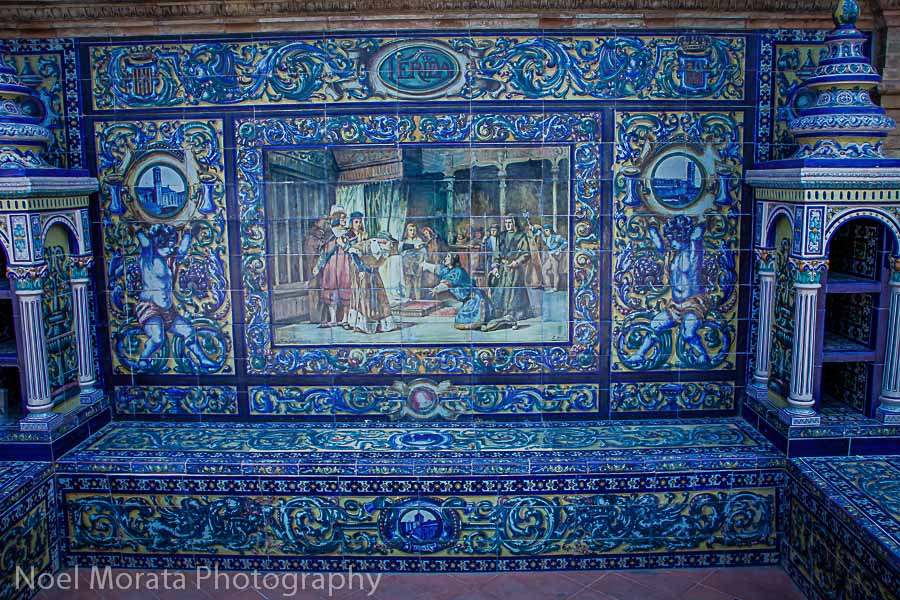
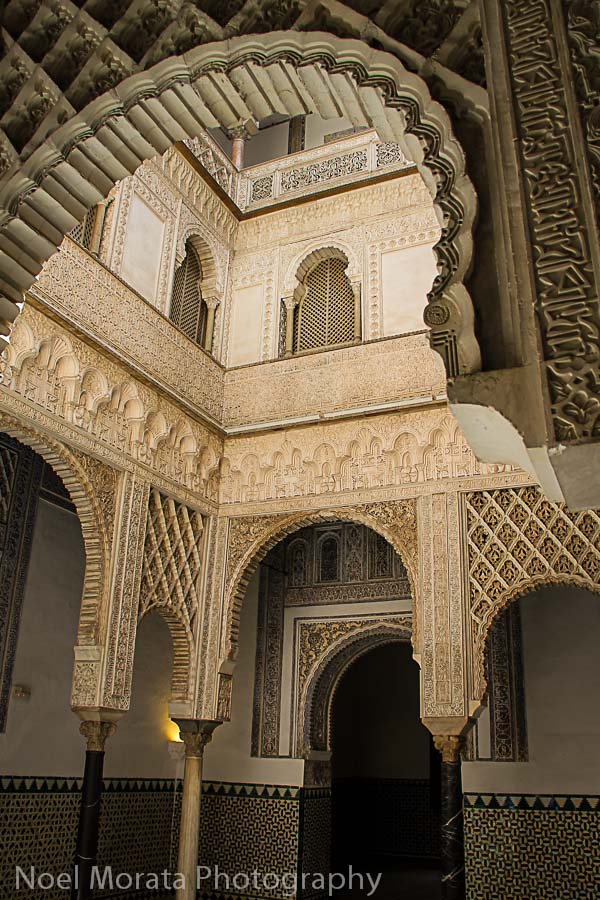
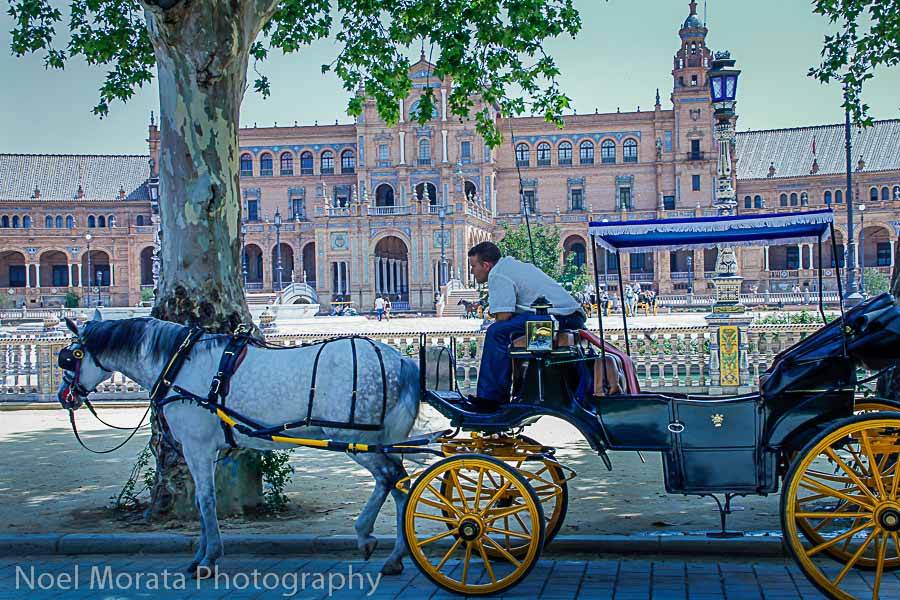
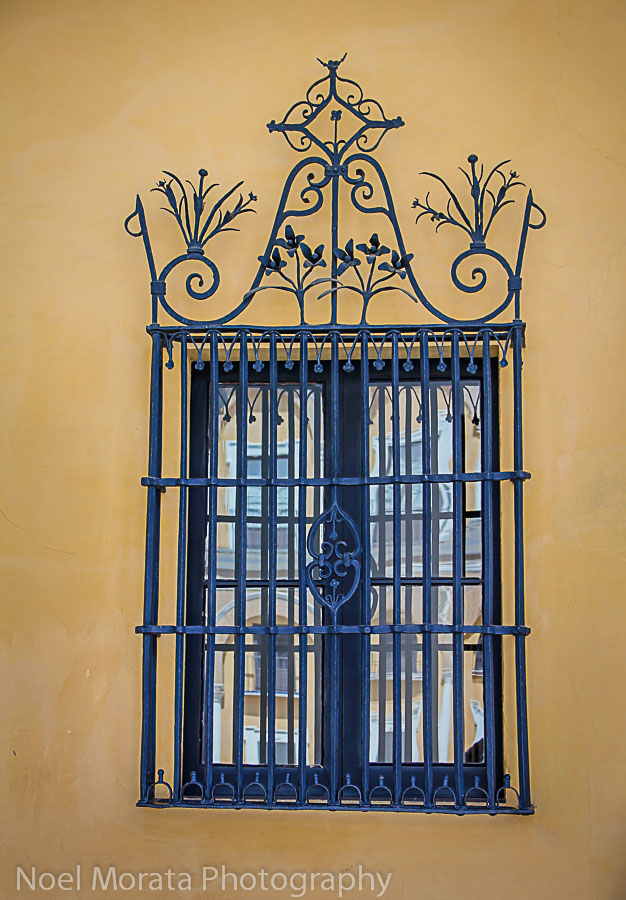
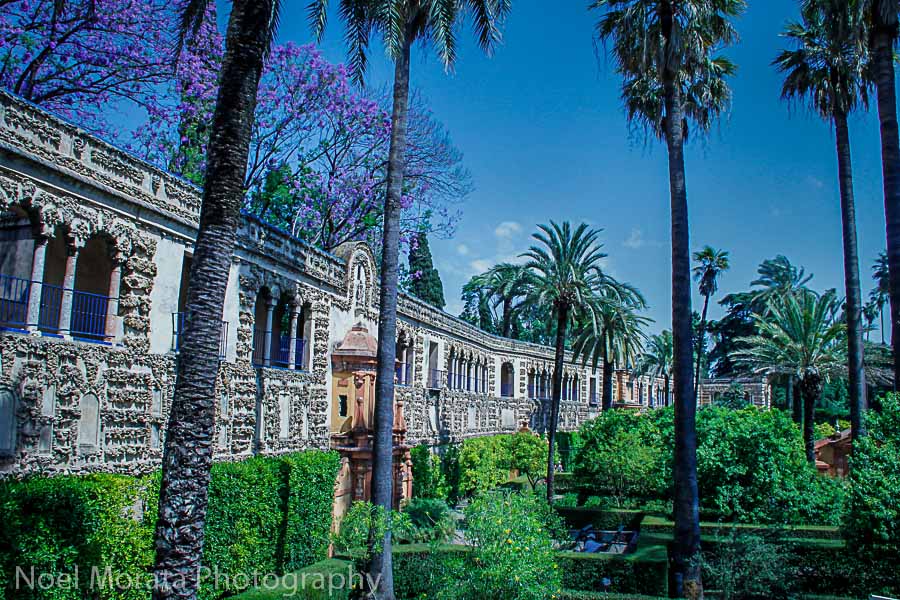

Beautiful city…
Love the beautiful scenes of Seville and the detail you’ve shown in the art and architecture shots. I’d love to experience any place that “oozes Andalucia”.
Makes me want to return to Seville. Beautiful shots (as always), Noel.
Just re-posted to friends heading this way next year. Time to go return to Spain. Love the pix. Olé
I love your pics, Noel! I’ve visited Spain several times, but still have not had the pleasure of visiting Seville. Hopefully … sometime soon!
so many wonderful places to travel around the world. I should have been born a millionaire to see them all!
Have a wonderful week.
I had a Spanish teacher in high school who used to rave about Seville and at 15 I did not understand, now I see your photos and I would to see it in person. I really love the ceramics, they remind me of Istanbul
Stunning! I love the architecture. I need to visit! I have only been to Barcelona and Madrid. Thank you for the lovely virtual trip!
Beautiful images of Seville! Such a gorgeous city.
Love the architecture, love your photos – and want to visit 🙂
Really wanted to like Seville, but the place just didn’t connect with me at all which is probably a shame considering the love for the city it receives.
You’ve captured it pretty well in these pictures though.
Aloha – Can’t wait to get to Spain (perhaps in 2015)! Your photos are so compelling! Love the Moorish influences in the architecture.
One of the first pieces of classical musi I came in contact with as a teen was “the Barber of Sevilla” -now I see it through your lens, it makes a perfect backdrop for that opera (operette?) – ornate is the right description!
Seville is one of my favorite cities in the world. Your photos make me want to go back soon!
We’ve pretty much decided to start our European travels in Spain next year and, thanks to your gorgeous photos, Seville will have to be at the top of the list! And you’re so right to focus on the details to avoid becoming totally overwhelmed by the beauty … absolutely stunning!
Ohhhhh those colors! Fabulous!
What rich colors in your photographs of Seville! Happy TPMonday!
Fabulous photos – makes me eager to return to Sevilla!
Some truly beautiful shots of my husband’s all-time favourite city! When we were in Seville it rained the whole time with torrential winds so I didn’t get any good exterior shots. Worth a return visit for sure!
Beautiful photos, Noel! I’ve visited the south of Spain, but I didn’t get to Seville unfortunately – it’s been on my list to go back to ever since! The colours here look so vivid.
Oh Seville looks magical… love all the tiling and ornate architecture. Beautiful photos Noel!
Ole! Ab fab Seville photos. I love the view through the arches- but they’re all wonderful. So evocative of place.
Beautiful photos that make me want to pack my bags and head right to Seville!
Beautiful photos but I’ve come to expect nothing less from you 🙂
I’m looking at your artful photos of beautiful Sevilla, with new Zentangled eyes. I am drawn in by the patterns of the mudejar architecture and design.
I should be in Seville in October. I’ll try to reproduce your first photo. 🙂 Thanks for these beautiful images.
The Moorish influence is so powerful in that area it reminds me of places I’ve visited in the middle east, the mosaics, arches, architecture. Great pictures!
Beautiful monday post… loved the horse carriage 😀
Seville is on the list of places I’d like to see. Your photos reinforce its right to be there. Fascinating architecture.
Beautiful photos, Noel. The Cathedral of Seville is the most beautiful and grandiose cathedral that I have ever seen.
The architecture really is amazing!
This looks amazing! We’re house sitting in Spain for the first time ever in August! Can’t wait
Noel! I love Sevilla, the heat, the colors, the tapas! I love it all. I was there not too long ago and recognize most of the places in your photos…so beautiful!
Seville looks absolutely gorgeous! We’re seriously planning a visit to Seville and Spain next year. Your photos are an extra enticement :-).